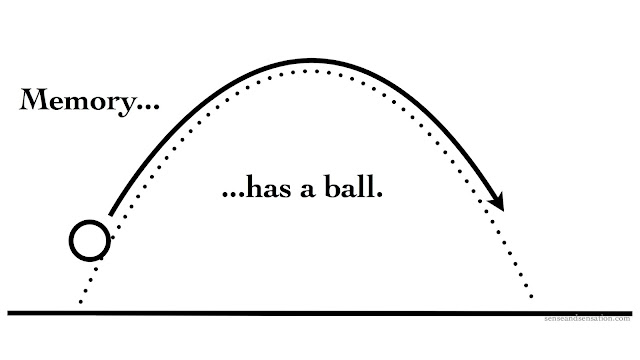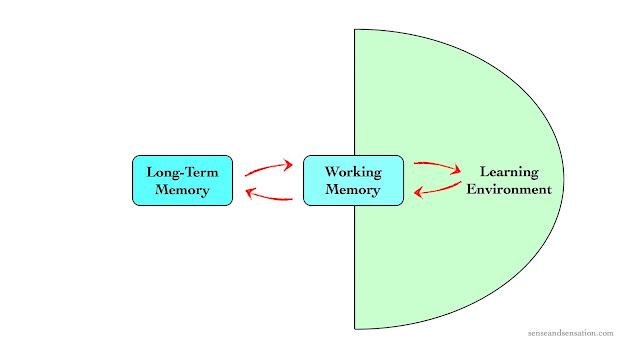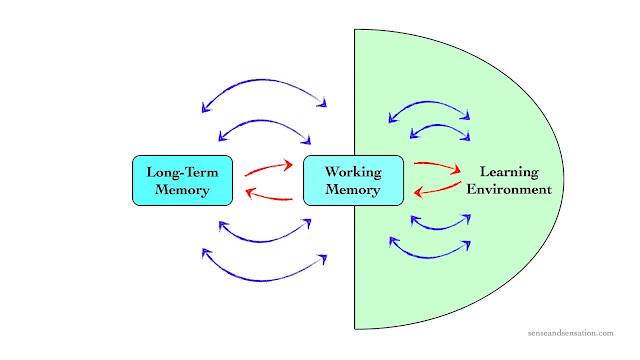Before we dig further into memory, we need a brief interlude. Let's take a step back and consider the whole system of thinking and memory for a moment. Here's something to begin:
Stored in the corners of our minds is the image of a ball soaring through the air. Let it be a baseball, basketball, football, or ball of your choice. It makes a great arc in the air, and we can picture it rising and falling. Until I mentioned it, we weren’t consciously thinking of it, but the image was there, planted from previous experiences in our lives, tucked away in what we call Long Term Memory.
Stored in the corners of our minds is the image of a ball soaring through the air. Let it be a baseball, basketball, football, or ball of your choice. It makes a great arc in the air, and we can picture it rising and falling. Until I mentioned it, we weren’t consciously thinking of it, but the image was there, planted from previous experiences in our lives, tucked away in what we call Long Term Memory.
When, in a conversation, someone starts talking about parabolas, we might initially hesitate, unsure of what a parabola is, but when she says that a parabola is an arc made by an object thrown in the air, we suddenly recall the image of the soaring ball. We dig it out of Long Term Memory, and we bring it to mind, to a place we call Working Memory, the place where we hold information we are thinking about at a given time. This place, working memory, is occupied by a mix of thoughts prompted by both our environments (in this case: the conversation about parabolas) and our long term memory (the flying ball).
This exchange between our long term memories and our environments is where learning happens. It is where encoding happens, where new information from an experience interacts with old information from long term memory, where the term “parabola” is attached to the image of a ball arcing through the air.
And this is a fruitful moment to introduce a diagram:
Our classrooms and the actions we make in them are the learning environments of our students (in green). And what our students fix their attention on determines what from the environment moves into working memory. In a stimulating classroom, working memory is engaged in a constant feedback loop between the student and the environment; students ask questions and manipulate content, focusing attention in new ways and bringing in new information.
When this new information triggers recall of old information, it summons the old information from long term memory (on the left), and the new and old information are encoded together. The more the learning experience engages long term memory, and mixes new information with it, the more richly all the information is encoded together. In this way, we want our students to have constant exchange between their learning environment, working memory, and long term memory. They should revisit and recycle information, strengthening it, associating it, and contextualizing it.
I include this diagram at this point in the introduction to cognitive science because it provides a timely contextualization of some of the processes we’ve looked at so far (attention and encoding) with some of the processes we’ll be looking at shortly (storage and retrieval). This separates the four stages of cognitive learning into two halves that roughly divide the learning process into two chunks: how stuff goes into the brain (attention and encoding), and what stuff comes out (storage and retrieval).
Up next: what happens to memories once they’re in our minds? How does memory work? What does it look like?!
This is the fifth of fourteen posts in a series about the role of cognitive science in education.
Introduction:
- Cognitive Science: The Next Education Revolution (Part 1 of 14)
- A Cognitive Model for Educators: Attention, Encoding, Storage, Retrieval (Part 2 of 14)
- Attention: the "Holy Grail" of Learning (Part 3 of 14)
- Encoding: How to Make Memories Stick (Part 4 of 14)
- (Interlude) Long Term Memory and Working Memory (Part 5 of 14)
- Storage I: How Memory Works - Redux (Part 6 of 14)
- Storage II: Sleep and Memory (Part 7 of 14)
- Retrieval: Getting and Forgetting (Part 8 of 14)
- Cognitive Design: Essential Questions for Educators (Part 9 of 14)
- Character and Success... and the Cognitive Model (Part 10 of 14)
- Towards a Unification of Pedagogies (Part 11 of 14)
- Why Old School and New School Aren't in Conflict (Part 12 of 14)
- Technology, The Brain, and Teaching (Part 13 of 14)
To have future posts delivered to your inbox, choose "subscribe" from the bar on the right side of the screen.



Thank you for your effective and easily understood diagrams on what is truly a complex topic.
ReplyDeleteRegards,
John